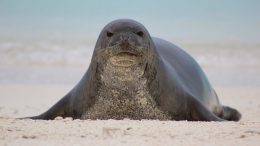The re-election of Donald Trump has scientists and conservationists like me worried about the wildlife and wild places we’ve dedicated our lives to protecting. This is especially true for ocean and coastal natural resource management and endangered species conservation, given Trump’s ongoing rhetoric. He’s attacked climate science and supported a plan to dismantle the National Oceanic and Atmospheric Administration. There are also reasons to be concerned about the scientists working to study and protect these species, who could find themselves out of work or actively persecuted.
During his first administration, Trump became the first president in history to un-protect a protected area when he lifted fishing restrictions in Northeast Canyons and Seamounts Marine National Monument, the 4,900-square-mile home to many endangered marine species and fragile deep-sea corals. Given his statements against national monuments and other public lands, that’s likely to repeat over the next four years. Project 2025, the right-wing playbook for his second administration, even calls for highly destructive mining practices within the boundaries of currently protected areas.
Meanwhile the planet’s biggest overarching threat — climate change — is expected to worsen under Trump, who ordered the U.S. to leave the Paris Climate Agreement on his first day back in office. Experts say there’s already basically no chance of limiting global temperature increases to 1.5 degrees Celsius, an important threshold for the survival of many species. This means that the oceans will continue to experience alarming heat waves, ice caps will melt, and sea levels will rise. Many ocean species are already moving out of their historical ranges or declining in population as waters warm above animals’ threshold for adaptation.
Both Donald Trump’s record and his promises for his second term show that marine and coastal species are unlikely to get the support they need to save them from further declines or even extinction. Experts warn that abandoning our climate goals, loosening or eliminating restrictions on pollution and habitat destruction, and failing to enact new environmental limits on industry will be catastrophic for many of these creatures.
And we’re not talking about a handful of fish: Overall NOAA is responsible for the conservation of 40 endangered and 59 threatened marine and coastal species in U.S. waters. The U.S. Fish and Wildlife Service is responsible for many more that live in freshwater and along beaches and coasts. All of them, and the ecosystems they depend on, face uncertain paths as Trump once again takes office.
I spoke with experts to learn why some of these species are threatened, what they need to recover and avoid extinction, and what’s likely to happen now.
Smalltooth Sawfish
To understand many of the threats Trump 2.0 poses to marine or coastal species, look no further than the critically endangered smalltooth sawfish (Pristis pectinata).
These shark-like rays — the first marine fish to be protected as endangered in U.S. waters — are threatened by habitat loss, entanglement in fishing gear, and, recently, a disease that made them (and other large marine organisms) spin in circles until they died.
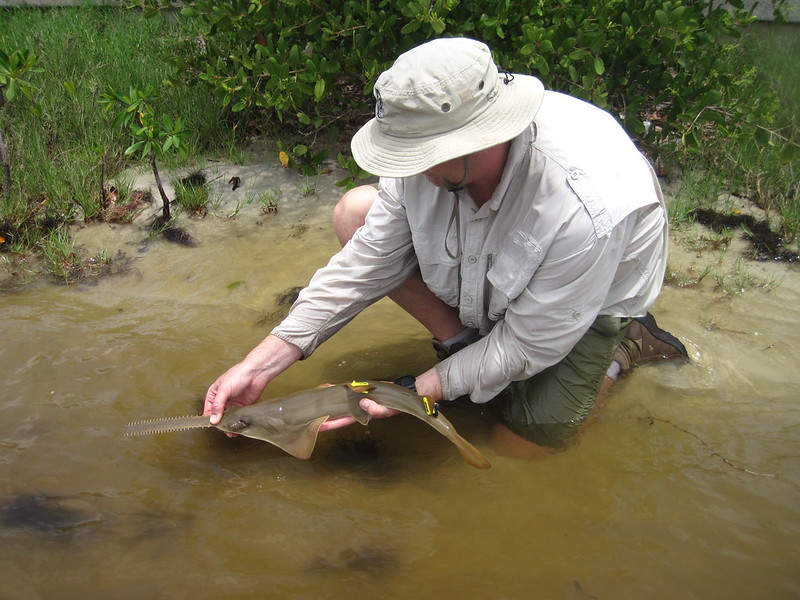
“To save sawfish, we need to fully implement our recovery plan, which requires increased and consistent funding,” says Tonya Wiley, president of Havenworth Coastal Conservation and the leader of the U.S. smalltooth sawfish recovery team.
That recovery plan depends on the continued existence of federal agencies Trump and his allies have vowed to cut or eliminate.
“Promises to dramatically reduce the size of the federal government, if they include cuts to NOAA or the U.S. Fish and Wildlife Service, could be detrimental to sawfish — and to all endangered species, since these are the agencies responsible for protecting listed species,” Wiley says.
Loosening environmental regulations at the behest of big corporations would also pose threats to sawfish and other endangered species.
“Donald Trump recently posted that anyone making a $1 billion investment in the United State would get expedited environmental approval and permits, which could mean that projects that destroy smalltooth sawfish critical habitat could get limited or no environmental review,” Wiley says. “Those areas have a key conservation objective which we have determined for the species.”
North Atlantic Right Whales
Other experts are worried about whales, particularly some of the world’s most endangered.
There are fewer than 400 North Atlantic right whales (Eubalaena glacialis) left in the ocean, so few that it’s national news when a baby is born.
It also makes headlines when one of them is killed, usually after they encounter human activity on the ocean.
“The biggest threats to right whales are entanglement in fishing gear and vessel strikes,” says Dr. Kimberly Davies, an oceanographer and associate professor at Dalhousie University. These threats are so bad they’re essentially the only documented reason the whales currently die. “Right whales do not die of natural causes and do not die of old age,” she says.
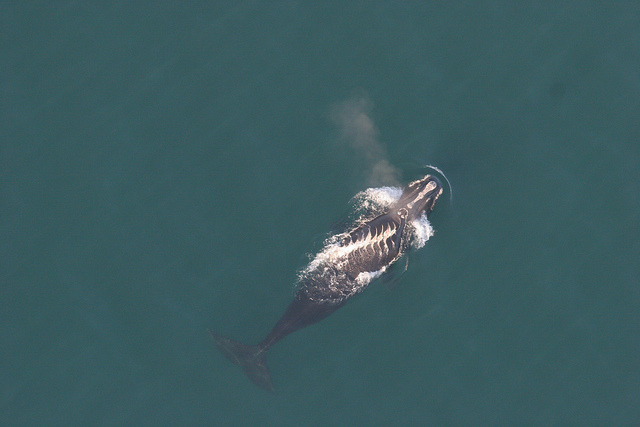
To save them from extinction, Davies and other experts say we need to move faster to adopt rope-on-demand fishing gear and limit the traveling speed of vessels in the whales’ primary habitat.
Given Trump’s position and record on deregulation, Davies says it’s unlikely the new administration will pass any new pro-whale restrictions on what the fishing and shipping industries can do. In what could be a sign of things to come, NOAA withdrew a proposed rule to protect right whales from vessel strikes during the final days of the Biden administration.
Meanwhile many people in the commercial fishing and seafood processing industries expect Trump to allow more fishing in protected areas and further remove “burdensome” regulations like Endangered Species Act protections, according to a recent article in Maine’s Press Democrat. There are also allegations that an appointee in the first Trump administration illegally worked to loosen regulations protecting these animals. Will we see similar actions under Trump 2.0?
Rice’s Whales
Rice’s whales (Balaenoptera ricei) are even rarer than North Atlantic right whales. We’ve already lost a lot of opportunities to protect them, as scientists only learned that they’re a unique species during the Biden administration. The critically endangered baleen whales live in the Northern Gulf of Mexico, where their threats include noise pollution and boat strikes from oil and gas exploration, as well as toxic exposure from oil spills.
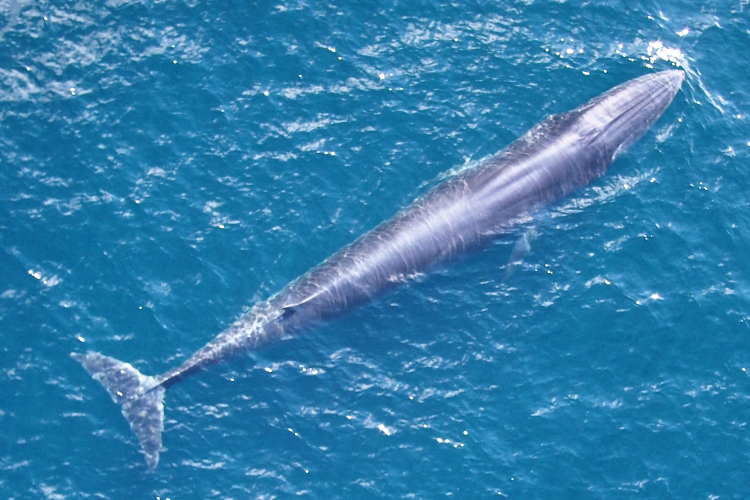
That threat is bad enough that they’ve been called “the whale that may upend the oil offshore oil industry.” Unfortunately that moniker assumes that protections under federal environmental rules are applied.
“The incoming administration’s pledge to ‘drill baby drill’ and their hostility toward scientific agencies and environmental regulations in general are major cause for concern, not just for the Rice’s whale but for many other protected species and their habitats,” says Dr. Marcus Reamer, a recent doctoral graduate from the University of Miami who studies marine mammal conservation.
There are other big uncertainties looming over these massive mammals. Rice’s whales were supposed to receive a critical habitat designation from NOAA this past December, but as of press time that doesn’t appear to have happened. Meanwhile a proposal to allow live-fire military exercises in the whales’ habitat — legislation championed by Trump ally and former Florida congressman Matt Gaetz — narrowly escaped inclusion in December’s National Defense Authorization Act. The fate of both the critical habitat and future military exercises in the Gulf of Mexico — or, as Trump wants to rename it, the “Gulf of America” — remain areas of concern.
Hawaiian Monk Seals
Experts have also expressed concern about some of the world’s most endangered pinnipeds, Hawaiian monk seals (Neomonachus schauinslandi), who live in the Hawaiian archipelago. While there have been promising signs of recovery in recent years, they still face many threats, including habitat loss due to sea-level rise, entanglement in fishing gear, and disease.
“In 2022 monk seal populations surpassed 1,500 individuals for the first time in 20 years, and their critical conservation work is rooted and supported by strong federal protections,” says Giancarolo Rulli, the associate director for public relations for the Marine Mammal Center which, among other things rehabs injured or sick seals. “We are deeply concerned about any attempt to dismantle federal laws, regulations, and policies necessary to continue this urgent work.”
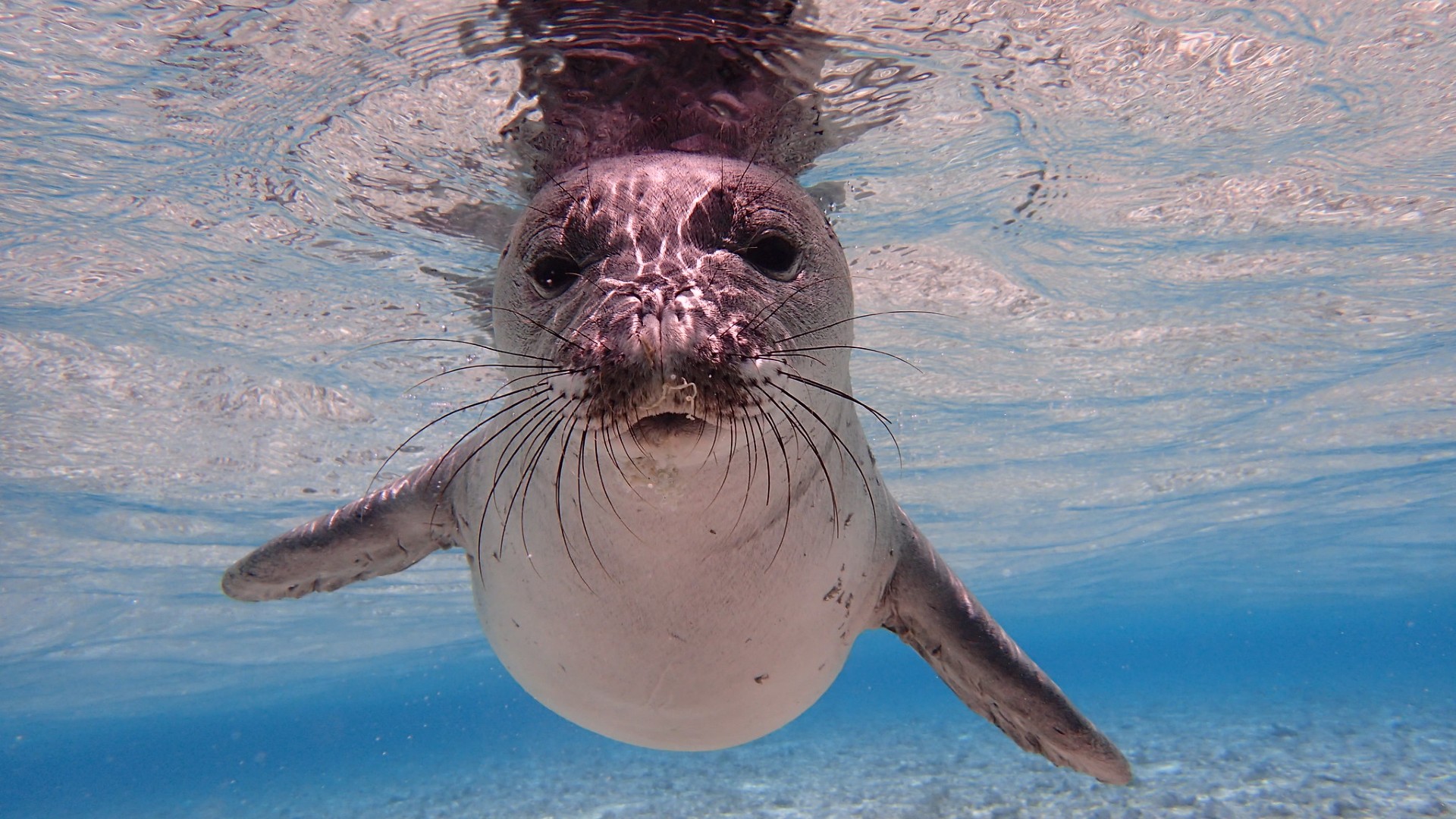
As with many of these species, people also benefit from their conservation. In this case, preserving Hawaiian monk seal habitats from destructive practices helps other marine species, which in turn boosts the local tourism and fishing economies. Protecting the seals’ habitat, therefore, “is beneficial not only to them as an endangered species, but to local Hawaiian communities,” Rulli says. Both the seals and Hawaiian people could suffer if Trump rolls back environmental regulations.
Coral Reefs
Corals, which form the basis of reefs that are called “the rainforests of the ocean” because of the amazing biodiversity they house, have been doing poorly for years. Nearly half of all species are assessed as threatened with extinction by the IUCN Coral Specialist Group.
One of the biggest threats to corals is warming waters, which causes them to bleach and die. And when corals die, the hundreds of species that depend on them for food or habitat also suffer.
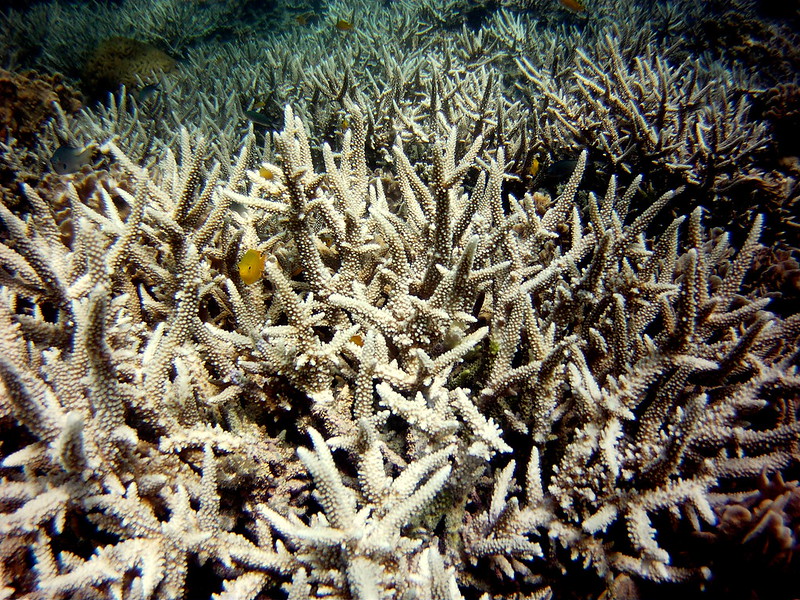
These amazing creatures and the vital habitat they create may be one of the first consequences of blowing past the 1.5 C threshold of climate change: warming of just 2 degrees Celsius will push most reef-building corals into conditions they can’t survive.
“To save corals, we need to reduce local threats like pollution and destructive fishing practices, and curb carbon dioxide emissions to slow the pace of climate change,” says Dr. Helen Fox, the conservation science director of the Coral Reef Alliance. “Trump’s disastrous record on climate change and the environment in general will surely be a problem for corals.”
Deer, Sea Turtles, Mangroves and More
Donald Trump has famously, or perhaps infamously, commented that sea-level rise will just result in “more oceanfront property, right?”
But rising oceans actually pose a major threat, and experts warn that the policies of the second Trump administration will lock in the worst effects of climate change and increase sea-level rise.
While it’s too early and too complicated to predict exactly how much waters will rise, it will likely be enough to destroy habitats of animals that live in shallow coastal habitats. Key deer (Odocoileus virginianus clavium), the smallest deer species in the Americas, are only found in the Florida Keys, where 90% of all land is under 5 feet above sea level. Storm surges from recent hurricanes have already put these tiny deer on uncertain footing.
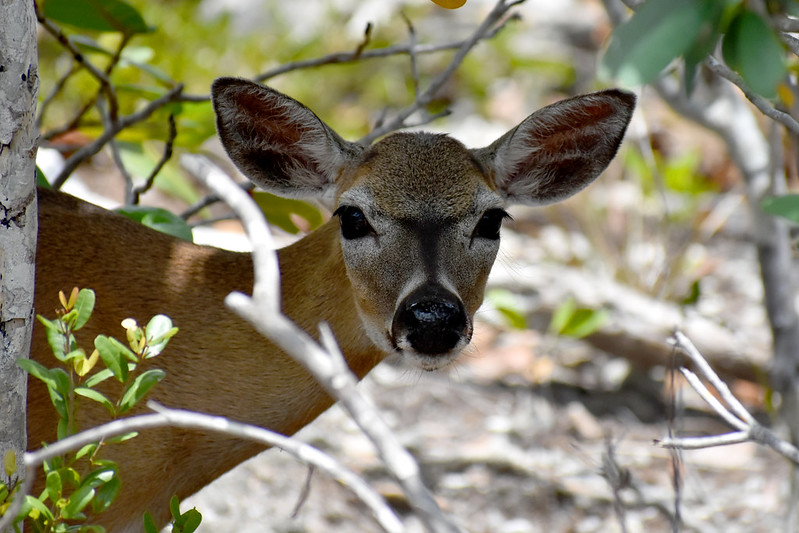
Sea-level rise has already wiped out one species in the Florida Keys: the Key Largo tree cactus (Pilosocereus millspaughii), which was declared extinct in the United States this past summer. (It still grows on a few other islands in the Caribbean.)
Flooding beaches are also bad news for sea turtles who nest on Florida beaches, compounding the impacts of warming sands on egg development. Eggs that develop on warmer beaches tend to produce more female turtles, and a lack of males in coming generations could threaten the species’ ability to reproduce.
Experts say hundreds of other threatened and endangered species on the east, west and Gulf coasts can be affected by sea-level rise destroying their key habitats, which could also harm plants and animals not yet protected.
Among those plants: mangroves and seagrasses, which provide critical protection from coastal flooding.
It’s not just endangered species of plants and animals that will be affected, but people: More frequent and more severe coastal flooding is already damaging communities around the country. That’s only going to get worse each year under the second Trump administration. And the damage done over the next four years could last for decades to come.

Previously in The Revelator:
Advice for U.S. Government Scientists: Lessons Learned From the ‘Muzzling’ of Their Canadian Counterparts

